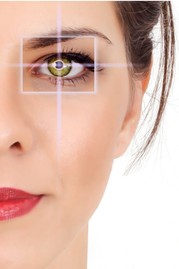| If your email program has trouble displaying this email, view as a webpage. | | |  Patients are experts in their conditions and offer valuable information to the U.S. Food and Drug Administration (FDA) about living with the condition and its treatments. Patient input can significantly impact the development, evaluation, and monitoring of medical devices. Discover how the FDA's Center for Devices and Radiological Health (CDRH) puts patients first with its Patient Science and Engagement Program. | Patient Engagement and Research  New LASIK Patient-Reported Outcomes Measure Qualified as a Medical Device Development Tool
"Patient-reported outcomes, such as visual symptoms and satisfaction with vision, are vital to understanding the potential outcomes that that can result from LASIK."
-Dr. William Maisel, Director, CDRH Office of Product Evaluation and Quality
The FDA qualified the Patient-Reported Outcomes with LASIK Symptoms and Satisfaction (PROWL-SS) questionnaire through the Medical Device Development Tools (MDDT) program. PROWL-SS is designed to assess the presence, bother and impact of four visual symptoms (double images, glare, haloes, and starbursts) and satisfaction with vision in patients undergoing LASIK surgery in support of both premarket and post-market medical device regulatory reviews. Read more.
|  New Article on Patient Preference Information Evolution and Future
Patient preference information can be used in medical device evaluation, when appropriate. A recent Value in Health article highlights how the application of patient preference information has evolved over the past decade and explores how it may continue to evolve. The article includes key messages from the 2020 FDA-ISPOR Summit on patient preference information. Read more.
|  New Article on Patient Preference Studies on Parkinson's Disease
The FDA's Center for Devices and Radiological Health, in collaboration with the Medical Device Innovation Consortium, The Michael J. Fox Foundation for Parkinson's Research, and RTI Health Solutions, developed an approach for including patient, clinical, and regulatory perspectives when identifying meaningful outcomes that may be used in designing clinical trials of medical devices for Parkinson's Disease. The approach identified nine patient-centric attributes for future use in a clinical trial design and in quantitative patient preference studies.
As a proof of concept, researchers used a patient-centered threshold technique to measure maximum risk levels that patients would accept to achieve potential benefits of a neurostimulation device. Although the study focused on Parkinson's Disease, the approach could be used to study patient perspectives about other diseases or treatment areas. Read more about the Patient-Centered Identification of Meaningful Regulatory Endpoints for Medical Devices to Treat Parkinson's Disease and the Parkinson's Patients' Tolerance for Risk and Willingness for Potential Benefits of Novel Neurostimulation Devices studies. |  10 New Case Studies on Clinical Outcome Assessments
Clinical outcome assessments describe how a person feels, functions, or survives and may be used to provide valuable evidence in regulatory benefit-risk assessments for medical devices. Patient-reported outcomes, clinician-reported outcomes, observer-reported outcomes, and performance outcomes are all types of clinical outcome assessments.
The FDA's Center for Devices and Radiological Health recently announced the availability of 10 case studies demonstrating how clinical outcome assessments have been used to support medical device marketing authorizations. Read more. | Save the Date: Patient Engagement Advisory Committee Meeting Contact Patient Science and Engagement If you have questions about interacting with the patient engagement team at the FDA's Center for Devices and Radiological Health, email CDRH_PatientEngagement@fda.hhs.gov. | | |
No comments:
Post a Comment